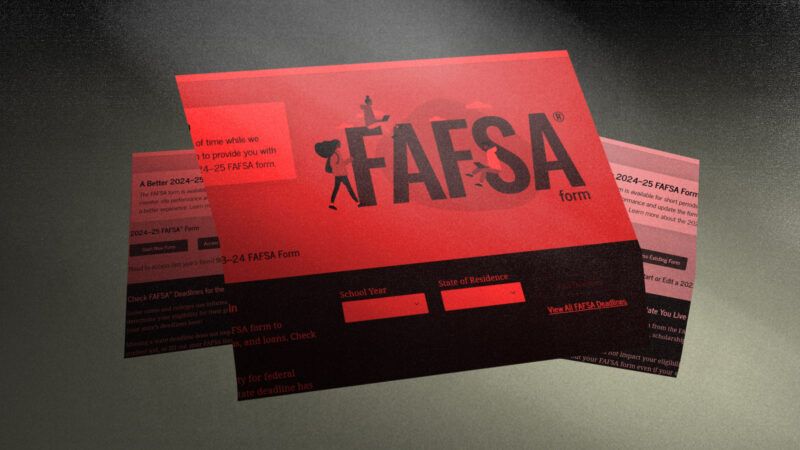The FAFSA 'Soft Launch' Was a Confusing, Glitchy Disaster
While the new version of the financial aid form was supposed to simplify the process, it has instead been riddled with technical problems and considerable delays.

On December 30, the Department of Education unveiled an updated, streamlined version of the Free Application for Federal Student Aid (FAFSA) form, a college financial aid form required for students seeking federal grants and loans. However, the application's launch was riddled with issues, leading to widespread confusion and frustration among families and students who attempted to submit it.
In 2020, the Consolidated Appropriations Act required the Education Department to develop a simplified FAFSA form. The new form cuts down the number of questions from 108 to fewer than 50 and relies on information directly imported from the IRS to reduce the length of the questionnaire.
But the path to making a streamlined form available has been marred by delays. The FAFSA form typically becomes available in October each year, but in 2023 the form was not opened until December 30. The deadline for submitting the form remains the same, meaning students and their families have three months less to submit the document.
Making matters worse, the rollout of the form was riddled with technical difficulties, making it incredibly difficult, if not impossible, for many families to initially submit the form. The Education Department did a "soft launch" of the form—the application is only available "periodically" for an unspecified period of time so that the department can "monitor site performance and form functionality" before it officially opens. But for those who have accessed the form during this period, the technical issues have often been overwhelming.
The New York Times' Ron Lieber detailed these issues in a piece about his attempt to fill out the new FAFSA on the day of the form's launch. Lieber began attempting to access the form at 2 p.m., but the site didn't allow him to actually start filling it out until 8 p.m.
"Things were not always clear," Lieber wrote. "At one point, the site was telling me that both my daughter and I had already started forms when in fact neither of us had, at least as far as I could tell." He ultimately faced so many website issues that he was unable to complete the form despite multiple attempts.
Leiber isn't alone. According to Inside Higher Ed, as of January 2, over 400,000 applications had been started, but only 150,000 of these have been completed.
"Small numbers of applicants have been able to submit their FAFSAs, but [the Education Department] has taken the application down for long and unpredictable stretches of time to correct problems experienced by early users," the National College Attainment Network, a nonprofit that studies FAFSA, wrote in a statement on the day of the launch.
"Even by soft-launch standards, this weekend's rollout was challenging and students, families, and financial aid administrators who have been waiting for this release for months are understandably frustrated," added Justin Draeger, president of the National Association of Student Financial Aid Administrators, in a statement Tuesday.
While making FAFSA simpler and easier to understand is a welcome proposal that could make obtaining college aid less daunting for millions, the new form's bumpy rollout is hardly a vote for confidence in the new system. When applications like these get rushed, the technical issues could end up meaning that the most vulnerable students get left behind.

Show Comments (28)